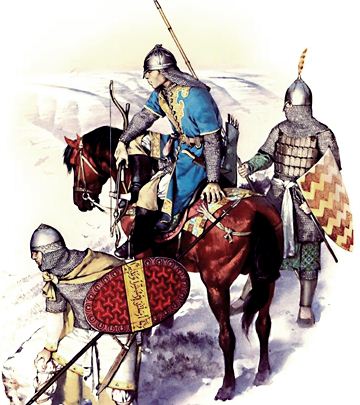
Battle of Sevastia(Sivas) |
year: 1070 |
| A victory of the Turks, a prelude to Manzikert | ★ ★ ★ ★ ★ |
|
enemy: Yavgιyya Turkomans
|
location: Sevastia, most probably modern Sivas, in Sivas Province, Turkey
|
accuracy:
●●●●●
|
|
battle type: Pitched Battle |
war: Seljuk Wars |
modern country:
Turkey |
| ▼ The Byzantines(emperor: Romanos IV Diogenes) | ▼ The Enemies | |
| Commander: | Manuel Comnenos | Emir Chrysoskoulos or Arisiaghi |
| Forces: | ||
| Losses: |
| Background story: |
| The problems of the Byzantines with the Seljuk Turks began in 1046, when the Seljuks invaded Armenia. Byzantium realized that the Seljuks had become a serious threat, when they captured important cities, like Ani in 1064 or Caesarea in 1067. In 1068, Romanos IV took the throne of Byzantium and, after a few speedy military reforms, started to campaign against the Seljuk Turks in order to drive them out of Anatolia. During the campaigns of 1068 and 1069, however, the Seljuks avoided to encage in battle and Romanos had only moderate success. The only gain of that effort was that he captured and fortified the city of Hierapolis in northern Syria. In 1070 the command of the forces of Cappadocia and the eastern borders was assigned to the couropalates, and general Manuel Komnenos, a nephew of former emperor Isaac I. At the same time, Romanos had begun peace talks with Seljuk sultan Alp Arslan. |
The Battle: |
 Seljuk warriors Manuel Komnenos hurried with his small force against the invaders of Chrysoskoulos. After a first skirmish near Sevastia, the Turks pretended to retreat and fled. The Byzantines relaxed and unsuspectingly approached the abandoned enemy camp, and then they were attacked and suffered heavy losses. Manuel Komnenos himself was taken prisoner. But, paradoxically, Manuel managed to persuade Chrysoskoulos of the benefits of a personal alliance with Byzantium, and Chrysoskoulos (who obviously did not need much to be convinced) defected and went to Constantinople with Manuel to negotiate with the emperor, who was thrilled and honored the Turk with honorary titles and gifts. The Seljuk sultan Alp-Arslan, when he was informed of this, sent to Constantinople the emir Afsin (Greek: Avsinalios) who demanded the surrender of the traitor. Romanos refused and this fact became the reason for the cessation of peace talks with the Seljuks. Moving east, Afsin began looting and destruction, and in between destroyed the Chonai in the Thracian Thema with unprecedented ferocity (although according to several historians the Chonai may have been ravaged before the Battle of Sevastia and the defect of Chrysoskoulos). |
Aftermath: |
| The battle itself was not particularly important, but the events that followed brought about a rapid deterioration in Seljuk-Byzantine relations and accelerated the developments that led to the catastrophic defeat by the Seljuks at Manzikert, the following year. |
|
|
